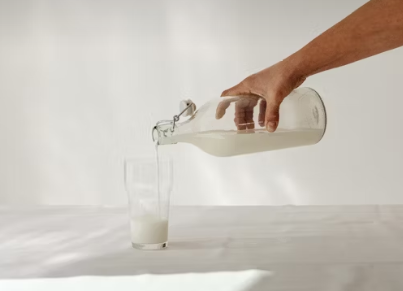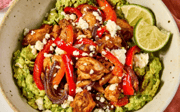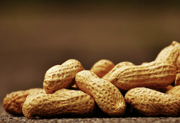Is raw milk making people sick in Florida? What you need to know before your next sip
- Replies 0
If you’ve spent any time at a farmer’s market lately, you’ve probably seen the buzz around raw milk.
It’s touted by some as a wholesome, back-to-basics superfood—milk the way our grandparents drank it, straight from the cow, unpasteurized and “full of life.”
But before you pour yourself a glass, Florida health officials have a sobering warning: raw milk may come with risks that far outweigh any supposed benefits.
The Florida Department of Health recently sounded the alarm after 21 people—including six children under the age of 10—fell ill with E. coli and Campylobacter infections.
All cases were linked to raw milk from a single, unnamed farm in Northeast and Central Florida. Seven people were hospitalized, and two developed severe complications, underscoring just how serious these infections can be.
Officials are still investigating, but they’ve already flagged the farm’s sanitation practices as a “particular concern.”
While the farm’s name hasn’t been released, the message is clear: even a single source of contaminated raw milk can have widespread, dangerous consequences.

Let’s break it down. Raw milk is milk that hasn’t been pasteurized—a process that heats milk to kill off harmful bacteria.
Advocates claim raw milk is more nutritious, easier to digest, and packed with beneficial enzymes and “bioactives.”
But public health experts, including the Food and Drug Administration (FDA) and Centers for Disease Control and Prevention (CDC), say those claims don’t hold up under scrutiny.
Here’s what the science tells us: raw milk can harbor dangerous bacteria like E. coli, Campylobacter, Listeria, and Salmonella. These bugs can cause everything from mild stomach upset to life-threatening illnesses.
In severe cases, infections can lead to hemolytic uremic syndrome (HUS), a condition that can cause kidney failure—especially in young children, older adults, and people with weakened immune systems.
Since 1987, the FDA has linked 143 outbreaks to raw milk or raw milk products.
These outbreaks haven’t just caused tummy aches—they’ve led to miscarriages, stillbirths, kidney failure, and even deaths.
And while some people drink raw milk for years without incident, the risk is always there, lurking in every unpasteurized sip.
Here’s where things get tricky. In Florida, it’s illegal to sell raw milk for human consumption.
But there’s a loophole: raw milk can be sold as “pet food,” and some people buy it for themselves anyway.
Meanwhile, online wellness influencers and raw food advocates have helped boost raw milk’s popularity, sometimes downplaying the risks or touting unproven health benefits.
Mark McAfee, founder of one of the world’s largest raw milk producers and head of the Raw Milk Institute, claims raw milk contains “bioactives” that boost the immune system. He sells his milk legally in California, where state law allows it.
But the CDC is clear: “Pasteurized milk offers the same nutritional benefits without the risks of raw milk consumption.”
Read also: Is your favorite breakfast off-limits? 20 states ban this grocery staple—but these 3 loopholes might let you get it anyway
Pasteurization isn’t just a bureaucratic hurdle—it’s a proven, science-backed way to make milk safe.
By heating milk to a specific temperature for a set period, pasteurization kills off the bacteria that can make us sick, without significantly changing the milk’s nutritional value.
That’s why federal law requires all milk sold across state lines to be pasteurized and why many states restrict or ban raw milk sales altogether.
The Florida Department of Health acknowledges that “many people consume raw milk safely.” But they also stress that the risk of contamination depends on the source and the producer’s handling and milking procedures.
In other words, even the cleanest-looking farm can have a bad day—and it only takes one slip-up to cause an outbreak.
Read also: Is there such a thing as too much pineapple? Here's what to know
If you’re considering raw milk, here are a few things to keep in mind:

Have you tried raw milk? Do you have memories of dairy straight from the farm? Or maybe you’ve experienced a foodborne illness and want to share your story?
It’s touted by some as a wholesome, back-to-basics superfood—milk the way our grandparents drank it, straight from the cow, unpasteurized and “full of life.”
But before you pour yourself a glass, Florida health officials have a sobering warning: raw milk may come with risks that far outweigh any supposed benefits.
The Florida Department of Health recently sounded the alarm after 21 people—including six children under the age of 10—fell ill with E. coli and Campylobacter infections.
All cases were linked to raw milk from a single, unnamed farm in Northeast and Central Florida. Seven people were hospitalized, and two developed severe complications, underscoring just how serious these infections can be.
Officials are still investigating, but they’ve already flagged the farm’s sanitation practices as a “particular concern.”
While the farm’s name hasn’t been released, the message is clear: even a single source of contaminated raw milk can have widespread, dangerous consequences.

Unpasteurized milk can increase the risk of contamination. Image source: Karolina Grabowska / Unsplash
Let’s break it down. Raw milk is milk that hasn’t been pasteurized—a process that heats milk to kill off harmful bacteria.
Advocates claim raw milk is more nutritious, easier to digest, and packed with beneficial enzymes and “bioactives.”
But public health experts, including the Food and Drug Administration (FDA) and Centers for Disease Control and Prevention (CDC), say those claims don’t hold up under scrutiny.
Here’s what the science tells us: raw milk can harbor dangerous bacteria like E. coli, Campylobacter, Listeria, and Salmonella. These bugs can cause everything from mild stomach upset to life-threatening illnesses.
In severe cases, infections can lead to hemolytic uremic syndrome (HUS), a condition that can cause kidney failure—especially in young children, older adults, and people with weakened immune systems.
Since 1987, the FDA has linked 143 outbreaks to raw milk or raw milk products.
These outbreaks haven’t just caused tummy aches—they’ve led to miscarriages, stillbirths, kidney failure, and even deaths.
And while some people drink raw milk for years without incident, the risk is always there, lurking in every unpasteurized sip.
Here’s where things get tricky. In Florida, it’s illegal to sell raw milk for human consumption.
But there’s a loophole: raw milk can be sold as “pet food,” and some people buy it for themselves anyway.
Meanwhile, online wellness influencers and raw food advocates have helped boost raw milk’s popularity, sometimes downplaying the risks or touting unproven health benefits.
Mark McAfee, founder of one of the world’s largest raw milk producers and head of the Raw Milk Institute, claims raw milk contains “bioactives” that boost the immune system. He sells his milk legally in California, where state law allows it.
But the CDC is clear: “Pasteurized milk offers the same nutritional benefits without the risks of raw milk consumption.”
Read also: Is your favorite breakfast off-limits? 20 states ban this grocery staple—but these 3 loopholes might let you get it anyway
Pasteurization isn’t just a bureaucratic hurdle—it’s a proven, science-backed way to make milk safe.
By heating milk to a specific temperature for a set period, pasteurization kills off the bacteria that can make us sick, without significantly changing the milk’s nutritional value.
That’s why federal law requires all milk sold across state lines to be pasteurized and why many states restrict or ban raw milk sales altogether.
The Florida Department of Health acknowledges that “many people consume raw milk safely.” But they also stress that the risk of contamination depends on the source and the producer’s handling and milking procedures.
In other words, even the cleanest-looking farm can have a bad day—and it only takes one slip-up to cause an outbreak.
Read also: Is there such a thing as too much pineapple? Here's what to know
If you’re considering raw milk, here are a few things to keep in mind:
- Know the risks: Raw milk can carry bacteria that cause serious illness, especially in children, older adults, pregnant women, and people with weakened immune systems.
- Check the source: If you do choose to drink raw milk, make sure you know exactly where it comes from and how it’s handled. But remember, even the best practices can’t guarantee safety.
- Consider the alternatives: Pasteurized milk offers the same nutrition, minus the risk. If you’re after probiotics or enzymes, there are plenty of safe, pasteurized options on the market.
Key Takeaways
- The Florida Department of Health has warned about the risks of drinking raw, unpasteurized milk after 21 people, including children, became ill with E. coli and Campylobacter linked to milk from a local farm.
- Despite it being illegal to sell raw milk for human consumption in Florida, the product is still sold as pet food and has grown in popularity due to online wellness claims, though authorities caution against its safety.
- Health experts and agencies like the FDA and CDC stress that raw milk can carry dangerous bacteria and cause serious illnesses, including kidney failure, whilst pasteurization kills these bacteria and does not affect the milk’s nutritional value.
- The Department of Health says many people consume raw milk without issue but warns that risks depend on farm hygiene and handling practices and advises Floridians to be aware of the potential dangers.






